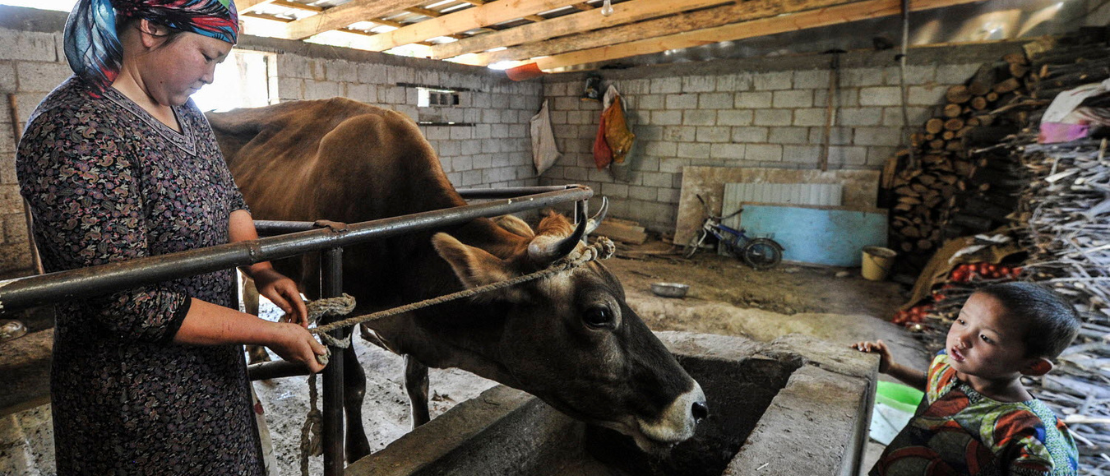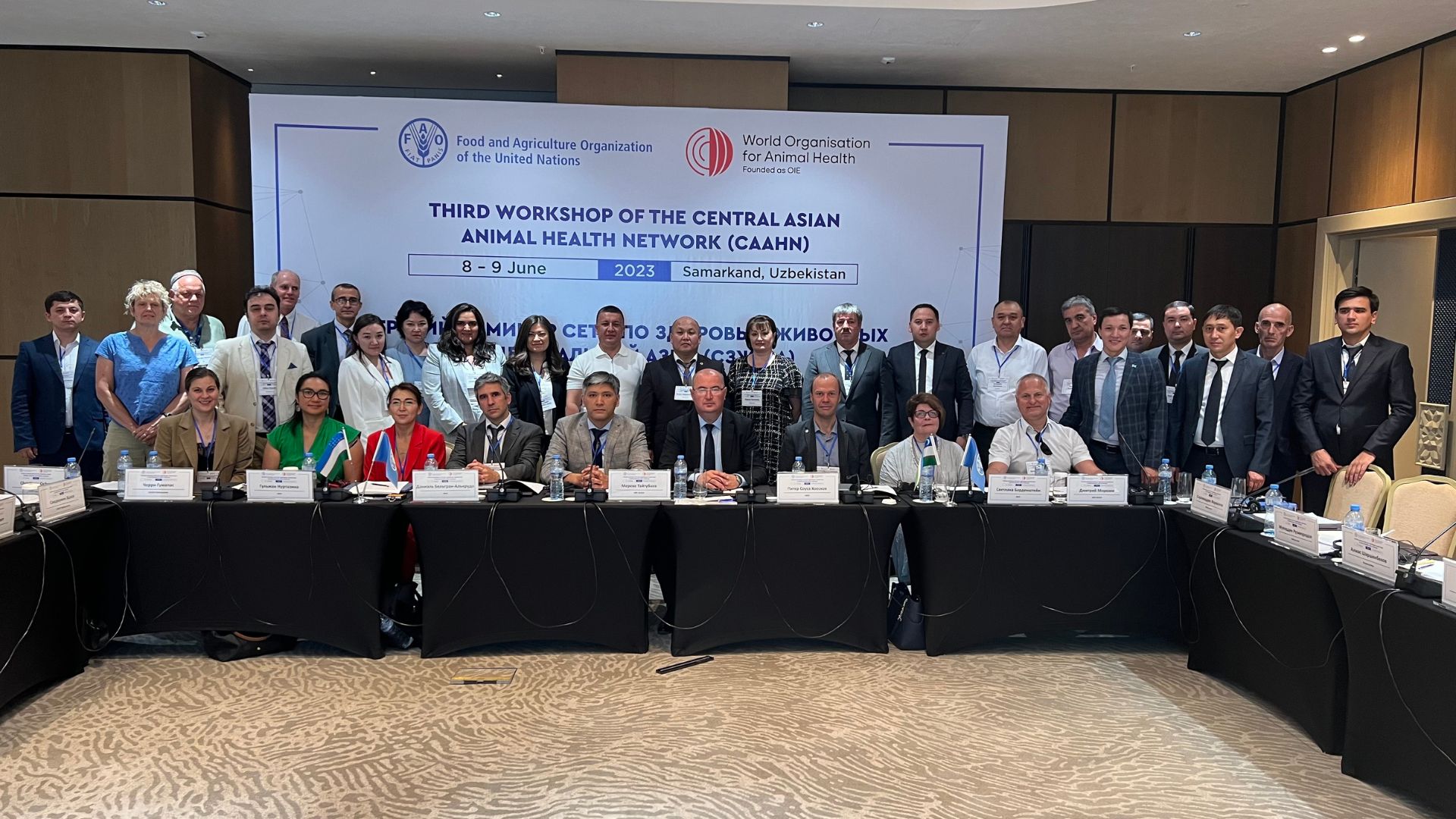Central Asian Animal Health Network members look at the future of animal health and One Health

©FAO/Vyacheslav Oseledko
The Central Asian Animal Health Network (CAAHN) convened on 8−9 June for its third meeting since its establishment in 2019 in the historical city of Samarkand, Uzbekistan, to delve into the future of animal health and the One Health approach within the region. Organized by the Food and Agriculture Organization of the United Nations (FAO), in collaboration with the World Organization for Animal Health (WOAH) Sub-Regional Representation for Central Asia, the workshop brought together representatives from the veterinary services of Kazakhstan, the Kyrgyz Republic, Tajikistan, Turkmenistan, and Uzbekistan, and major international players in the region, including USAID and the World Bank.
The primary work of the CAAHN network is to address zoonotic diseases – those illnesses that can be transmitted between species animals to humans, such as brucellosis, echinococcosis, anthrax, and tuberculosis. To be controlled, zoonoses and transboundary diseases require a multifaceted, multi-sectoral response, as delivered by One Health.
One Health is an integrated approach that aims to sustainably balance the health of people, animals, and ecosystems. The network promotes One Health as a way to prevent and mitigate transboundary, zoonoses and antimicrobial resistance at the human-animal-plant interfaces.
“Perhaps most importantly, the network is crucial in streamlining and coordinating initiatives and projects related to animal health and One Health in Central Asia, which avoids duplication and overlapping efforts by international agencies and countries,” commented Daniel Beltrán-Alcrudo, Technical Advisor on Animal Health.
During the workshop, participating countries and international agencies had an opportunity to map out and discuss key activities, initiatives, and priorities concerning animal health and One Health in Central Asia. The CAAHN action plan underwent a thorough revision and update, with particular emphasis given to issues related to network sustainability. Among others it was agreed that FAO should take the lead in developing a regional training plan that aligns countries' specific needs with existing and forthcoming knowledge-sharing programmes offered by various agencies. Focal points from the national public health authorities will be identified to join the network, in line with the One Health approach. Furthermore, the veterinary services of the five Central Asian countries have confirmed their intention to formalize their collaboration within the framework of the network through a memorandum of understanding.
Among the workshop’s notable sessions was the one dedicated to the brucellosis situation in the region. Brucellosis is a serious and significant health challenge. Participants explored strategies for bringing it under control through a coordinated regional approach. As the event concluded, countries and international agencies pledged to continue their collaborative efforts based on the Action Plan and reconvene in one year to assess progress and address emerging priorities.
"The Central Asian Animal Health Network provides an invaluable platform for building strong technical capacity, fostering competency, nurturing leadership, and establishing a critical mass of specialists networked across the region. This collaboration is crucial in promoting animal health and the One Health approach in Central Asia," emphasized Gulzhan Nurtazina, Regional Coordinator of the Virtual Learning Centre at FAO.
9 June 2023, Samarkand, Uzbekistan
Veterinarians in Central Asia discuss animal health data
Second Workshop of the Central Asian Animal Health Network (CAAHN)
Online training helps veterinarians combat avian influenza
Webinar: Highly Pathogenic Avian Influenza in Central Asia and the Caucasus
Central Asian countries work towards better animal health

